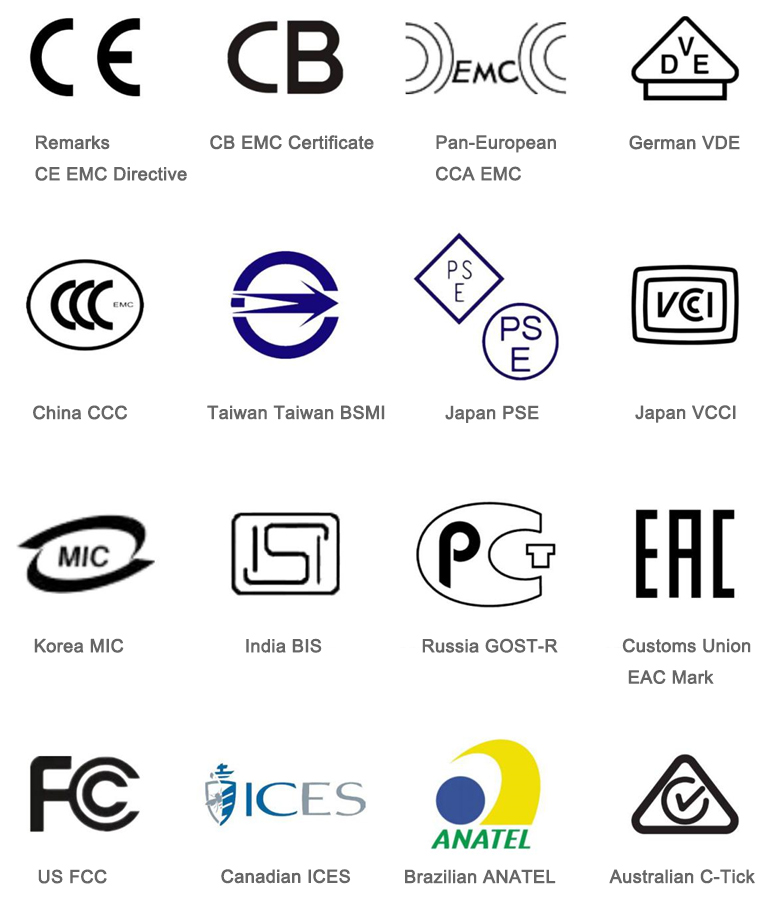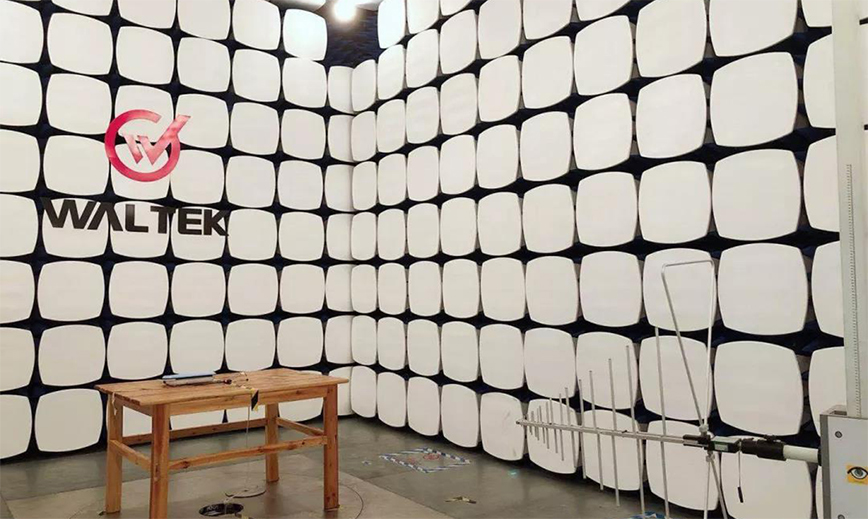For electronic and electrical products, countries around the world have strict regulatory control and certification requirements for electrical safety, energy efficiency requirements, electromagnetic radiation, chemical testing and packaging labels. Given that EMC standards are mandatory requirements for entrance into most national markets, let's take a look at what EMC is, which products must be EMC tested, and how EMC testing should be applied.
First, EMC certification mark
Since the 1930s, with the increasing complexity of the electromagnetic environment and the emphasis on the immunity of electronic devices, some international organizations have b researched and developedof EMC technologies, such as the International Electrotechnical Commission (IEC), the International Telecommunication Union. (ITU), European Committee for Electrotechnical Standardization (CENELEC), and the International Radio Interference Committee (CISPR) and the 77th Technical Committee (TC77) of the IEC.
At present, the International Electrotechnical Commission (IEC) undertakes most of the EMC standardization work, and for the needs of international trade, most EMC standards in most countries in the world are based on IEC and CISPR standards.

Second, EMC definition and meaning
When you were watching TV, you took a call and the snow image appeared on the TV screen. This is because your TV and mobile phone have mutual interference with electromagnetic energy.
The International Electrotechnical Commission (IEC) defines Electromagnetic Compatibility (EMC) as the ability of a device or system to operate in its electromagnetic environment without causing unacceptable electromagnetic disturbances to any device in its environment.
This definition contains the following three aspects:
1. EMI: Electromagnetic Interference EMI: Equipment or systems that are in a certain environment cannot generate electromagnetic energy exceeding a certain limit during normal operation;
2. EMS:Electromagnetic Immunity EMS: A device or system
in a certain environment that can withstand certain limits of electromagnetic energy interference during normal operation;
3. Electromagnetic environment: the working environment is where the equipment or system is located
Third, EMC test standards and projects
The EMC standard system in the world adopts the International Electrotechnical Commission (IEC) standard classification system, which is divided into three categories: basic standards, general standards, and product standards. The product standards are further divided into series product standards and special product standards. Each type of standard contains both interference and anti-jamming standards. The EMC standard is adopted in accordance with the order principle of “Special Product Standards → Product Standards → General Standards”.
Test Items:
| Electromagnetic interference project | Electromagnetic immunity project |
|
Conducted interference Radiation interference Radiating magnetic field Harassment power Electromagnetic field strength Power harmonic Voltage fluctuations and flicker |
Electrostatic discharge Electrical fast pulse group surge RF conducted immunity RF radiation immunity Power frequency magnetic field Voltage drop and interruption |
Except for a small number of national deviations, the EMC test standards are roughly the same in each country.
| Common product categories | Domestic standard | International Standards |
| lighting products | GB17743 |
CISPR15 IEC61000-3-2&3 |
| home appliance |
GB4343 GB17625.1&2 |
CISPR14-1&2 IEC61000-3-2&3 |
| AV/IT |
GB13837 GB17625.1 GB13836 |
CISPR13&20 IEC61000-3-2 IEC60728-2/FDIS |
| IT |
GB9254 GB17625.1&2 |
CISPR22 IEC61000-3-2&3 |
Fourth: FAQ
Q:What is the certification process for my product to do EMC testing?
A:Regarding the product CE certification as an example, product certification in other countries must go through a similar process as follows:
①.Product EMC and safety performance meet the standard requirements;
②.Inform the certification
body of the certification requirements and conduct a certification test (this step is not required for self-declaration);
③.The certification body gives a certificate of conformity (COC) and a report;
④.A Declaration of Conformity
(DOC) is signed by a professional laboratory;
⑤.The product is affixed with the CE mark.
Q: The certification body said that the product should be applied by model. What is the division rule for the product line?
A: EMC certification should be applied in principle according to the model. However, for those derivative products that have little change compared to the main product, a representative model can be selected for certification in the same series. The specific
division rules of the product series are as follows
1. According to the product type, products of different types cannot be divided into the same series;
2. According to the working principle of the product, products with different
working principles cannot be divided into the same series;
3. According to the key parts that affect the electromagnetic compatibility of products, products with different key components, printed circuit diagrams and electrical structures
cannot be divided into the same series;
4. According to the origin of products, products of the same trademark, the same specification but different origins cannot be divided into the same series.
Q: Do all electronic devices need to do EMC testing?
A:Not all electronic devices require EMC testing. For example, in the CE EMC Directive it is mentioned that some devices are exempt from EMC testing, which they call “Inherently benign equipment”; similarly, FCC certification has similar provisions, which is referred to in Part 15.103. Exempted Devices.
Q: How to choose a good EMC certification body?
A:EMC testing includes test methods, measuring instruments and test sites. The test methods are based on various standards. The measuring instruments are based on the frequency domain, and the test site is a prerequisite for EMC testing.
